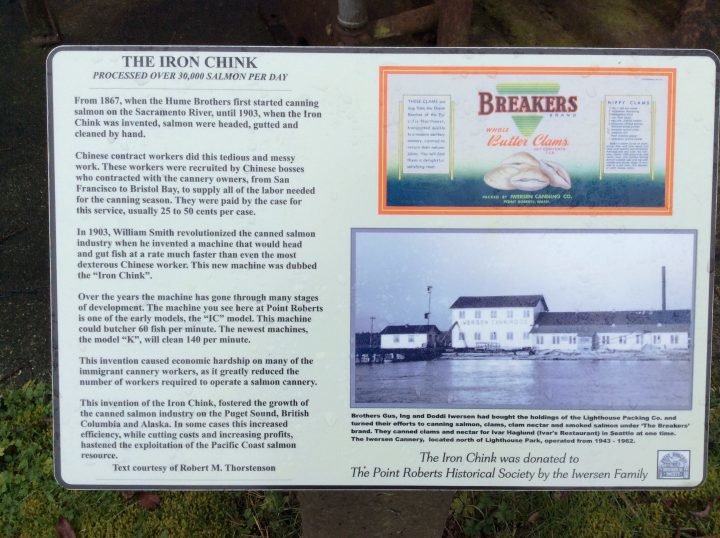 An example of the interpretive signage that will be placed throughout the Point. Photo by Jessica McVey By Meg Olson
An example of the interpretive signage that will be placed throughout the Point. Photo by Jessica McVey By Meg Olson
The Point Roberts Historical Society is applying for funding to help pay for an interpretive signage program and self-guided tour of Point Roberts’ past.
“We want to have a series of up to 25 signs at places of historical interest and a map, a historical tour of the Point,” said society president Jessica McVey.
The local parks department has already given approval for three signs, one at Baker Field, one at the community center and one in the adjacent parking lot. “That’s where the old school used to be,” McVey said. “The WPA would build them a new one but not fix the old one so it was torn down.” The Works Progress Administration, created by President Franklin D. Roosevelt in 1935, built thousands of new school buildings during the Great Depression.
McVey said they would meet with county parks staff in early March to discuss placing three signs at Lighthouse Marine Park, two at Monument Park and an additional sign at Lily Point Marine Park. “It will talk about the indigenous peoples who were here because that isn’t mentioned on the signs we already have there,” she said.
The proposed signs will be a smaller format than the interpretive signs currently at Lily Point, similar to the sign adjacent to the “Iron Chink” at the community center. “They will have a few photographs and some information about the history of the place,” McVey said. (Ed. note: The derogatory slur, Iron Chink, was used in reference to the fact that the machine was used to replace the Chinese workers who had formerly processed the salmon catch.)
Additional signs on private property will be the final phase of the project plan. “It depends on who is receptive to having signs on their property and how we can protect their privacy,” McVey said.
The historical society has applied to the Whatcom Community Foundation’s Project Neighborly to raise $2,250 to manufacture the signs. Project Neighborly invites the community to donate to the grant projects and then tries to top up the projects that aren’t fully funded by community donations. To donate to the project, visit bit.ly/398ixCD.
The Point Roberts History Center in the community center is also a good place to learn about local history. It is open every Saturday from noon until 4 p.m. and during special events. “It really is a beautiful room with a welcoming feeling and lots to see,” McVey said.
One wall features a timeline of Point Roberts history from the book Point Roberts Backstory by Mark Swenson, also for sale at the history center, as well as the original windows from the Alaska Packers Association (APA) cannery, framing historical photographs. Another wall features quilts of old houses on the Point by Judy Ross. Several display cabinets hold pieces of Point Roberts’ past collected by the society.
The center also sells shirts and sweatshirts with the APA cannery salmon tin image, mugs and books about Pacific Northwest history and Coast Salish peoples.
Comments
No comments on this item Please log in to comment by clicking here